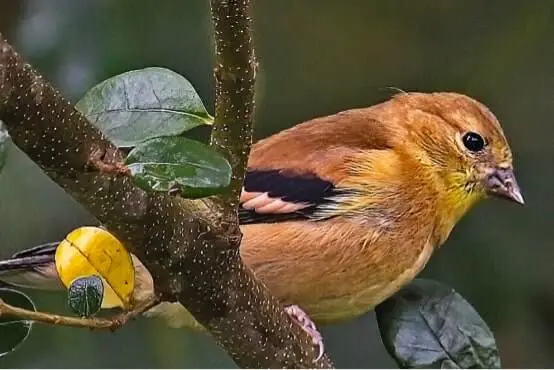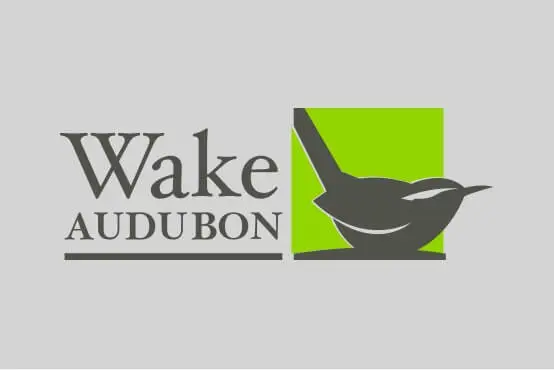Migration, Local Movements, and Residential Habitats

November Goldfinch photo by Bob Oberfelder.
By Gerry Luginbuhl
Authored by Phil Doerr
November! It’s midway past the time of year when fall migration is really exciting! Every day (well actually night-time!!) holds the promise of delivering another delightful arrival of amazing numbers of birds, and the potential for some of our favorite woodlands to host a new group of warblers and thrushes. We closely monitor the fruiting dogwoods, tupelos, hackberries and persimmons or oaks for activity. Almost any oak species supports bocoos of the wee invertebrates sought by the famished hordes! October 7, 2023 “Birdcast.info” radar reported 1.2 billion birds were in flight across North America and Wake County recorded passage of more than a million birds that same night! Most of these birds are passing through to Central or South America, but recently we’re seeing the arrival from the north of a number of species of sparrows that will spend the winter with us and brighten our outings at least until April next year! The list includes Song, Chipping, Savannah, White-throated, Swamp, Field, Vesper, and occasionally White crowned sparrows. The brushy areas these birds frequent are often shared with American Goldfinches, our locally nesting birds, most of whom stay with us all year. However, our winter visitors from the north include some goldfinches fleeing northern regions where the cold is more intense. Consequently, American Goldfinches are often considered to be short distance migrants, or largely non-migratory in the south. Collectively there’s a moderate southerly shift to the continental goldfinch population.
Above photograph is of a post breeding season, likely male, goldfinch w/buffy wing bars, yellow shoulders and throat with a rich almost rusty back. Some of these have been around us recently, this one was “captured” by Bob Oberfelder. Most goldfinches will seem a bit dull soon as they acquire winter plumage via the fall molt.
For the long distance migrants we’re by now all aware of the extreme dangers the night fliers face from glass towers and artificial lights, especially during heavy migration flights. To prevent thousands of bird deaths on such nights we turn the lights off from 11pm to 6am. It’s very simple and easy! But what about our more local bird movements? Is there danger here?
If we are indeed making our yards bird friendly, with native plants, replacing all or part of the ecological deserts represented by the “lawn” then it’s important we make our yards bird SAFE!
Lights, and glass in neighborhood parks and nearby residences with good habitat can be a death trap for migrating birds and even our winter residents or visitors. Lights may confuse birds and while the habitat may seem otherwise suitable, even single-story structures with windows will reflect habitat and kill birds.
Recent research from Oklahoma State University biologists that examined how bird population abundance reflected mortality revealed that some species were disproportionately vulnerable. These included Black-throated Blue Warbler, Ovenbird, Ruby-throated Hummingbird, Yellow-bellied Sapsucker, Wood Thrush, Gray Catbird, Common Yellowthroat, Brown Thrasher, White-breasted Nuthatch, and American Goldfinch. Of special concern to us is that the first several birds in that list are long distance migrants, but there’s continuum to the last three species (including our BOTY!) that are largely short distance migrants or even non-migratory. The long-distance migrants often travel at night in large flocks and are especially vulnerable to the lighted glass expanses in large cities. The non-migratory birds, (read goldfinches!) seem more vulnerable to local hazards where they live, and thus residential and business structures may be a frequent problem. This underscores the need to eliminate or reduce lighting in or near our homes, and to use bird safe glass so that our feeder citizens (nuthatches, goldfinches, titmice and chickadees) are less vulnerable to window strikes.
For this end of fall migration season month please:
- Turn out the Lights 11pm-6am!
- Leave your leaves (the creeply crawlies need’em) and
- Leave last year’s flowering stems as well-at least until spring greenup. is starts! (there’s lots of eggs and overwintering bugs in there.
As always thanks for all ya’ll do for the birds-keep it going!
Phil Doerr, Wake Audubon Board Member & Volunteer
To see all of the posts on the American Goldfinch, go the our Bird of the Year site


